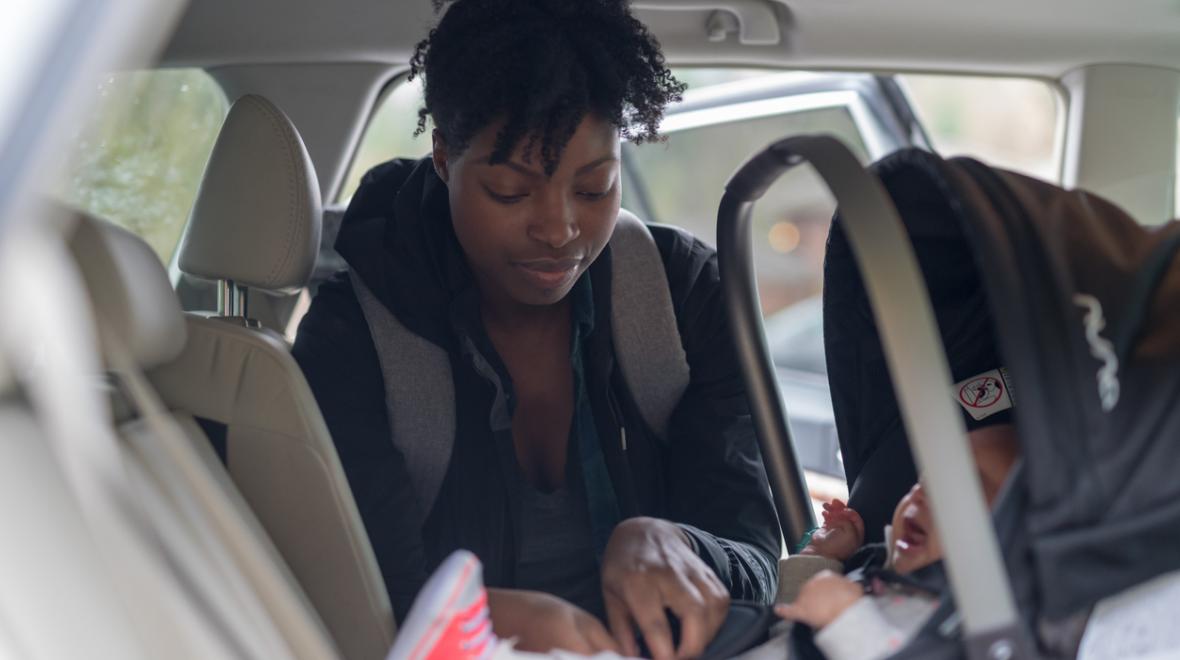
Child safety seats reduce the risk of injury by 71–82 percent and reduce the risk of death by 28 percent as compared to children of similar age using seat belts. Booster seats reduce the risk of non-fatal injury in 4- to 8-year-olds by 45 percent compared with seat belts alone. This stuff matters.
This post was originally published on the Seattle Children's website
A bit of background: Back in 2011 the medical community got serious and started encouraging parents not to turn their newly minted 1-year-old forward-facing in the car. The reasons were clear: Data confirmed it was much safer for toddlers to remain rear-facing in the car (and in the event of a huge slowdown or car accident as the car comes to a stop, a toddler’s relatively large head and neck are protected better with the entire back and sides of the seat restraining them).
That recommendation has recently changed based on a reexamination of the data and the ongoing understanding that rear-facing is safer — even longer. In Scandinavia, most children sit rear-facing all through toddler-hood and preschool. Fortunately, most “convertible” or car seats designed for toddlers are built to accommodate children rear-facing well past age 2.
Seats have weight and height guidelines and restrictions clearly marked on the seat itself, so you can always check the seat and ensure it accommodates your 3- or 4-year-old facing the back.
There is no rush to move children forward-facing — in fact, every transition we make as our children grow decreases the protection they get: from infant bucket seat → convertible five-point car seat facing back of car → convertible five-point car seat facing front of car → booster seat in backseat → seat belt in back seat → seat belt only in front seat at age 13.
The new American Academy of Pediatrics guideline eliminates the age-specific milestone to turn a child’s car seat around. Instead, children should ride in rear-facing car seats until they reach the height or weight limit provided by the car seat manufacturer. That might be just before starting pre-K or kindergarten.
New recommendations and updates to Washington’s law:
1. Infants/babies/toddlers: Infants and toddlers should ride in a rear-facing car safety seat as long as possible, until they reach the highest weight or height allowed by their seat. Most convertible seats have limits that will allow children to ride rear-facing for two years or more.
Editor’s update: As of Jan. 1, 2020, Washington’s child restraint law requires children up to age 2 to ride in a rear-facing car seat.
2. Toddlers/preschoolers: Once they are facing forward, children should use a forward-facing car safety seat with a harness for as long as possible, until they reach the height and weight limits for their seat. Many seats can accommodate children up to 65 pounds or more.
Editor’s update: Washington’s updated law says children ages 2 to 4 years must ride in a car seat with a harness (rear- or forward-facing).
3. Early school age: When children exceed these limits, they should use a belt-positioning booster seat until the vehicle’s lap and shoulder seat belt fits properly. This is when they have reached at least 4 feet 9 inches in height and are 8 to 12 years old.
Editor’s note: As of Jan. 1, 2020 Washington’s child restraint law requires children 4 years and older to ride in a car or booster seat until they are 4 feet 9 inches tall.
4. School age: When children are old enough and large enough to use the vehicle seat belt alone, they should always use lap and shoulder seat belts for optimal protection.
Editor’s update: Washington’s updated law requires children over 4 feet 9 inches to be secured by a properly fitted seat belt.
5. Middle school and beyond: All children younger than 13 should be restrained in the rear seats of vehicles for optimal protection. Even if they are as tall as you and as heavy as you, they are safer in the back until at least age 13, and it’s the law in Washington state.
Why is rear-facing better?
This is physics, but it’s simple physics. The worst crashes are when a car hits something from the front. Rear-facing seats protect the child’s head, spread out the force of a crash evenly across the seat, and significantly reduce the risk of injury to the head, neck and spine. If the car crashes and your baby/toddler/preschooler is facing forward, their head/neck/spine is whipped forward without any support.
Use the easy “latch and tether” method to securely attach the car seat to the frame of the car whenever possible. If you must attach the seat using a seat belt, make sure the seat belt is tight (i.e. the seat belt has no slack and won’t loosen). You want the car seat to feel very secure and immovable in the car itself.
We know that by using the proper car seat, the risk of death or serious injury is lowered by more than 70 percent. All children younger than 13 years should be in a vehicle’s back seat. Once children reach the height or weight limit and shift to a forward-facing seat, they should use safety seats with harnesses for as long as possible, often up to 65 pounds. Once children exceed height or weight limits for those seats, they should use a belt-positioning booster seat until the lap and shoulder belts fit properly, when the child has reached 4 feet 9 inches in height.
Booster seats until 4 feet 9 inches tall
- Do this now: Put a mark on the wall at 4 foot 9 inches from the ground. Tell your children to come and ask about getting out of a booster only when they are taller than the mark. The goal is to have the seat belt fit them properly (the booster just boosts them up so it protects them more safely). The seat belt should rest on top of thighs/pelvis, go straight across the middle of chest, and cross the middle of their collarbone, avoiding their face and neck. Kids need to be able to sit back in the seat (no slumping over) when riding in the car.
- The booster seat is critically important because it helps the seat belt (and your child!) stay in position during a crash so that the car can do its job to protect the occupants. Seat belts are only designed for adults and don’t fit properly until a child is 4 feet 9 inches tall – most kids will reach this height sometime between 9 and 12 years of age. I also like to remind kids that when in a booster they are up higher and can see better out the windows! True…
- Some parents mistakenly put kids into the seat belt when they aren’t big enough. Dr. Beth Ebel, a Seattle Children’s pediatrician who also researches injury prevention and cares for children at Harborview Medical Center, sees these older kids admitted with serious abdominal injuries, spinal fractures and head injuries because the seat belt doesn’t hold their torso in a crash.
- Don’t negotiate on car safety. Dr. Ebel keeps extra inexpensive booster seats and asks that every kid traveling in her car uses one.
Editor’s note: This article was originally published in December 2018, and updated in January 2020.











